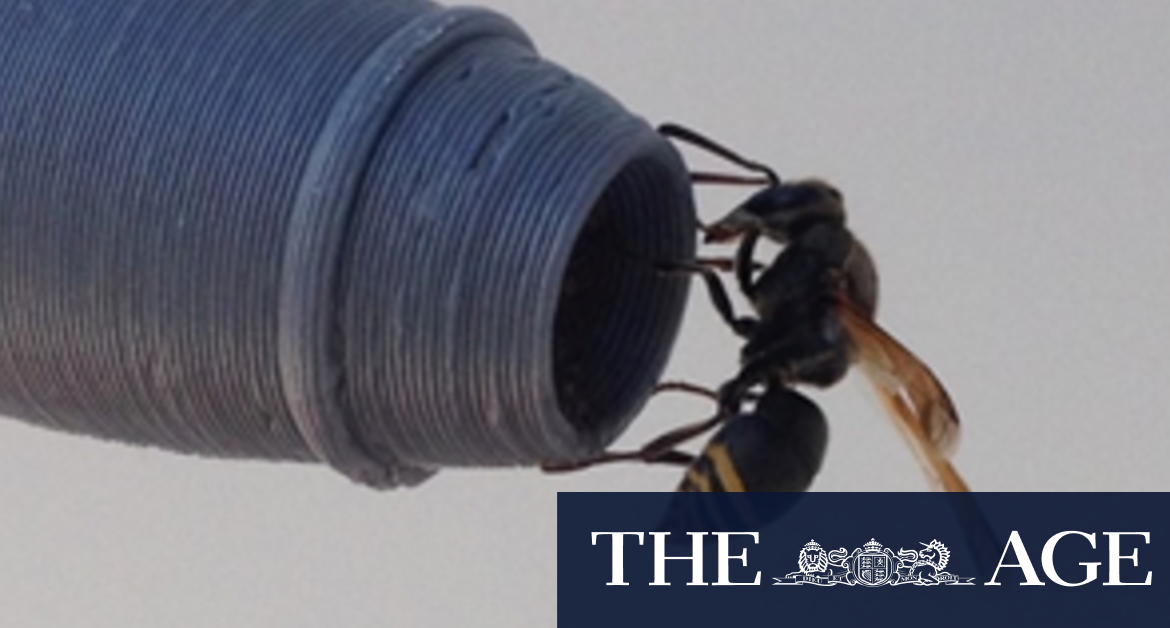“The incident with the Etihad aircraft highlighted the need to respond appropriately to any sort of hazard to flights, no matter how small,” Mr Ring said.
“We had to identify the appropriate measures because aircraft have a number of these probes which give critical flight data to the pilot which is critical for flight.”
The airport commissioned research into the wasps’ behaviour and whether there was any way to stop them targeting the probes.
Dr Alan House from science consulting firm Eco Logical Australia did the research, using 3D-printed replicas of the probes places at various points around the airport to find out what species of wasp used them, and whether there was any type of probe they preferred.
Dr House said of the dozens of species of wasps that lived around the airport, just one species nested in the test probes, the keyhole wasp (Pachodynerus nasidens).
“It’s an exotic wasp from Brazil and that species is well known for nesting in small cavities, which is why it’s called the keyhole wasp.”
The species appears to have arrived in Brisbane around 2010, when it was detected near the Port of Brisbane, and it seems to have made its way over to the nearby airport since then.
Dr House said the wasps could make their nests very quickly and, importantly, they didn’t have to finish their nests to cause the instruments to malfunction.
“It could only take a few minutes while an aircraft is at a gate for the wasps to come around looking for an opportunity,” he said.
“The record is a plane that was on the ground for less than an hour at a gate returned to the gate with an airspeed discrepancy and had a wasp nest in one of its probes.”
Loading
The researchers found the wasps preferred probes with slightly more than three millimetres of space in their opening, and tended to prefer well-grassed areas near their nesting sites, which could indicate a good management strategy for where planes are parked and how the land around the airport is managed.
They’ve also recommended putting covers on the probes when aircraft arrive as well as diversionary programs to draw the wasps away from planes.
Dr House said the wasps fall in a unique niche which means they haven’t been on biosecurity authorities’ radar up until now, but they needed to be looked at more closely and measures taken to prevent their spread.
“We’ve tried to get both Biosecurity Queensland and federal authorities interested in treating this as a serious pest but it falls between the cracks a little,” he said.
Stuart Layt covers health, science and technology for the Brisbane Times. He was formerly the Queensland political reporter for AAP.
Most Viewed in National
Loading







